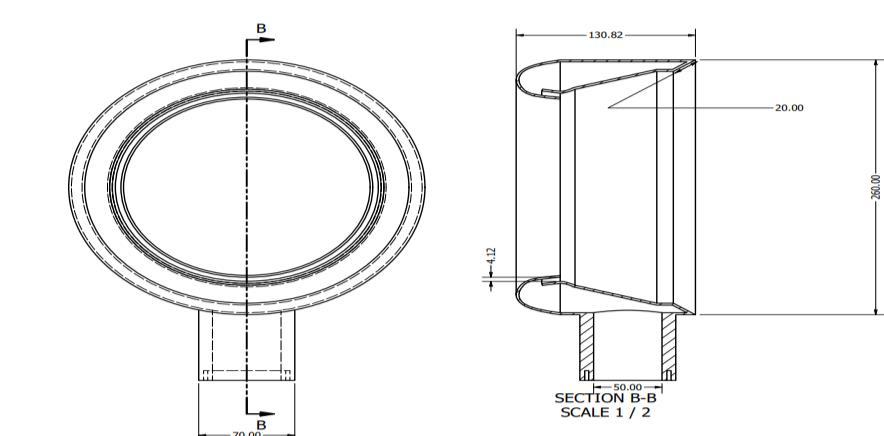
2 minute read
Hoop Back Part
Volume: 08 Issue: 06 | June 2021 www.irjet.net p-ISSN: 2395-0072
lesser than copper, but aluminium being cheap it is used as a cold chamber. (thermal conductivity of copper box, k=385W/mK). The heat is conducted evenly from the four vertical sides of the cold chamber box, which is removed by the cold side of the Peltier module. The air sucked by the centrifugal fan below it comes in contact with the sides of the cold chamber box and thus air leaves with lowering its temperature.
Advertisement
Fig-2: Main base attached with Peltier Module(Yellow) and fins(green).
The rectangular spaces provided in the main base are used for connection Peltier modules(as shown in yellow). The Peltier modules with cold sides are connected to the aluminium box. For proper adherence of the Peltier module to the aluminium box, thermal pastes are applied. The hot side of the aluminium box is connected to the heat sinks (as shown in green), again for proper adherence thermal paste is applied. Heat sink connected dissipate away the heat liberated from the hot side to the atmosphere. The heat sink is connected externally by the axial flow heatsink fans (as shown in red) using a nut and bolt assembly.
Fig 3- Main base with axial flow fans, top view of the main base, and cover of aluminium box. When the air is passed through the cold chamber, it is passed over the circular hoop on the top. The hoop design should involve aerodynamics to entrain, induce, and thus multiply the sucked air. The hoop design must be 3D printed and must be analyzed for various shapes for good multiplication of air.
Fig-4: Hoop of the fan, hoop with assembly. A trial model was made of a hoop of 26cm diameter, it was given converted into STL format and the mass of the hoop was checked with ABS and PLA material, the mass of the hoop with PLA is 908g with 30% infilland mass of the hoop with ABS is 926g with 30% infill. In the 3D printing process, the objects given for printing are generally crosshatched or uses other patterns for interior surfaces and some space in the print remains empty, to completely fill the space infill percentage is increased. With 100% infill the mass of the product was 1100g for PLA and 1198g for ABS materials. The cost of ABS and PLA is Rs 16/g and Rs 9/g , the total cost Rs17,600 and Rs9,900, moreover the printing time was 42 hours. Hence FDM method of manufacturing was discarded because of cost and time of manufacturing. Hence, sheet metal cutting is used for manufacturing rather than FDM.
Fig-5: Sheet front and sectional side view of test model made for 3D printing.
3.1 Dividing the geometry into suitable components.
The Project is divided into the following parts for manufacturing it by sheet metal rolling, tapered rolling, and bending operations: 1. Hoop Outer Part 2. Hoop Back Part 3. Hoop Tapered Part 4. Main Base 5. Hoop Front Part 6. Lower Cover 7. Aluminium Box Bottom Cover 8. Aluminium Box (Cold Chamber)





